After Twitter announced Wednesday it would remove graphic images of a beheaded American journalist and suspend the accounts of anyone who shared those photos and videos, users of the social network wondered what prompted the move.
The surprising explanation: Robin Williams.
After the actor's suicide last week, Williams' daughter said she was quitting Twitter because she received disturbing photo-shopped images of her father’s death. Her move prompted Twitter on Tuesday to announce that it would remove images of people who have died at families' requests.
That same day, tweets of a disturbing video surfaced on Twitter purporting to show the beheading of the American journalist James Foley. YouTube quickly removed the video, but tweets of the graphic images persisted. By Wednesday, Twitter was suspending users and removing tweets with images of the beheading.
Twitter’s decision to remove content is unusual for a company that has long prided itself on being an unfettered platform for free speech. It also stands in contrast to Facebook’s policy, which allows users to share beheading clips as long as they condemn and don’t celebrate them.
Twitter spokesperson Nu Wexler declined to comment about the decision, but directed The Huffington Post to a link on the company's website explaining the new policy that allows family members to request removal of content. Twitter would not say whether it had been contacted by Foley's family, and HuffPost's attempts to reach the family were not successful.
Cliff Lampe, an associate professor at the School of Information at the University of Michigan, said Twitter’s decision to remove graphic images of Foley’s beheading appeared to be in response to people sharing the cover of Wednesday’s New York Post, which published a widely condemned image of the journalist’s beheading.
Lampe said Twitter’s move was surprising because the company has chosen not to police other forms of content that might be considered offensive, such as racist and misogynistic postings. Twitter's media policy says users who post violent images should apply the account setting “Mark my media as containing sensitive content,” which requires a viewer to click through before viewing the image.
Twitter says it weighs families' requests to remove images against "public interest factors such as the newsworthiness of the content" and may not be able to honor every request.
Still, the company’s decision to remove graphic images and suspend accounts that share them could upset loyal users, Lampe said.
“Many Twitter users value the openness of that platform so they have to be careful about this decision or they risk alienating their users,” Lampe said. “It’s a slippery slope. Where do they draw the line?”
On Wednesday, Twitter users debated the company’s decision to remove images of Foley's death. Many supported the move, saying that sharing images of the beheading would only serve as propaganda for ISIS, the militant group responsible for the killing.
Others wondered whether certain content, even images that are painful for grieving family members, are still valuable for public discourse. Some noted how Twitter had become a crucial medium for protesters and journalists documenting clashes with police in Ferguson, Missouri, where Michael Brown, an unarmed black teenager, was killed by police.
Other social media sites claim to have strict policies on sharing graphic content. Google's social network, Google+, warns users: "Do not distribute depictions of graphic or gratuitous violence,” and says it may suspend or terminate accounts that violate the policy. Instagram’s community guidelines say it may suspend an account and report its owner to the authorities for posting “videos of extreme violence or gore.”
But it remains unclear where those companies draw the line.
While Twitter’s decision may provide comfort to grieving families, it may also impact activists who use the platform to subvert government censorship and broadcast atrocities.
As HuffPost reporter Bianca Bosker noted, Facebook’s initial ban on users sharing beheading clips made it harder for activists to broadcast human rights abuses, because their enemies used Facebook’s policy to have their pages silenced and posts removed. The company reversed the ban several months later.
Twitter’s decision to remove graphic imagery “would be a chilling decision for some of those activists,” Lampe said Wednesday.
"The big takeaway is not why Twitter made this decision but that they can make this decision," Lampe said. "It shows how the owners of these platforms where so much public debate and activism takes place still control these platforms."
Enjoy reading this article? Read more selections from the best of HuffPost in Huffington Magazine.